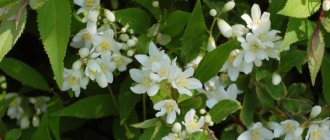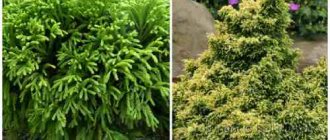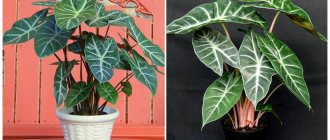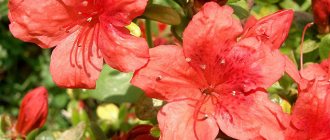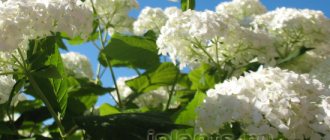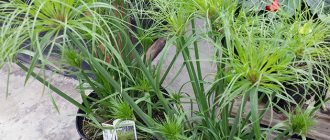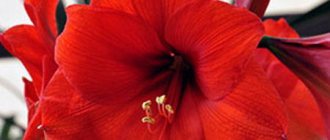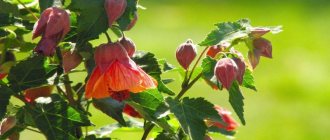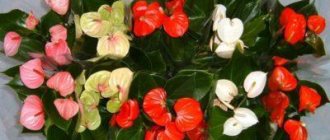Celosia belongs to the Amaranthaceae family. And its inflorescences are compared to a blazing fire (that’s why the flower was called “celosia”, translated from Latin as “blazing”). In nature, these flowering annuals and perennials are found on the African and American continents, as well as in Asian countries. In total, more than 55 species are known.
Celosia belongs to the Amaranth family
This plant is heat-loving, so while in warm regions celosia can be grown as a perennial, in colder regions it grows as an annual flower.
Flower growers value these flowering plants for the beauty and brightness of their inflorescences, which can take the form of combs or small bunches.
Flower growers value celosia for the beauty and brightness of its inflorescences.
Botanical description of celosia
Since these flowers cannot withstand air temperatures below 0⸰C, in most Russian regions these plants are grown as annuals. The stems of celosia are erect, well branched, the foliage is alternate, its shape can be ovate, ovate-lanceolate or linear-lanceolate. The flowers are small and can be collected in inflorescences of the following shape:
- spicate;
- comb;
- paniculata.
The colors of the petals are very diverse: from yellow and golden to orange and scarlet, as well as red or pink. The fruits are capsules in which many small seeds ripen.
Brief information about the plant
The celosia plant belongs to the Amaranthaceae family. Its name means “burning, flaming.” The shape of the plant's inflorescences is similar to a fiery tongue.
Of the 60 known species, three common types of celosia are used as garden crops: pinnate, comb, and spikelet.
The plant can be either annual or perennial and has the form of a bush. In gardens it reigns as an annual grown by seedlings. The culture does not tolerate sub-zero temperatures.
In nature, it grows in Africa, America, and Asia. On straight, branched stems there are ovoid, alternate leaves. The inflorescences are formed from small, bright flowers of different colors: orange, red, pink, golden, scarlet.
Inflorescences in the form of spikelets, panicles, combs of the “cockscomb” type. After flowering, fruits are formed - boxes with a large number of seeds.
How to grow celosia from seeds (video)
We also recommend reading:
16 most popular indoor plants Physalis: description of species and varieties, technology for growing from seeds Spruce in landscape design: the best ornamental varieties and characteristics of cultivation Kalanchoe: description of types and characteristics of care at home
How to prepare seeds before planting
Despite their small size, the seeds are equipped with a very dense shell. It prevents their germination, so germination may be low. You can increase it if, before planting celosia, soak the seeds in a solution of Zircon or Epin. Thanks to these preparations, the seedlings will be stronger and more resistant to various diseases. What you need for growing
Growing seedlings begins with preparation. You will need:
- ready-made soil mixture;
- wide capacity;
- cup;
- seeds;
- trowel;
- gloves;
- sprayer;
- boiled and cooled water;
- Epin (or other growth stimulant);
- vermiculite or sphagnum;
- a sheet of glass, a transparent plastic bag or a piece of greenhouse film.
For accurate sowing, you will need a toothpick. But many gardeners make their work easier and do without it.
Decorative types of celosia
The most famous variety of decorative celosia is silver celosia, which includes paniculate and pinnate types of these flowers.
Celosia pinnate (paniculate)
This variety of celosia can reach 0.9-1.0 m in height, but there are also miniature varieties. The foliage of this species can be bright emerald, pink or scarlet. And the color of small flowers can vary from orange to various shades of red.
Celosia pinnate (paniculate)
Celosia comb (cockscomb)
This flower is known among gardeners as “cockscomb”. The height of the peduncle can reach 0.5 m, but smaller specimens are also found. The color of foliage in different species can be emerald, dark red, golden or bronze in tone. The inflorescences are bright scarlet in color, and in shape they are simply comb flowers.
Celosia comb (cockscomb)
Celosia spica
This spectacular, magnificently decorative beauty compares favorably with its “brothers”, so it will look great in a flowerbed among other flowers. Its stems are straight, often grow together, very strong, and can grow up to 0.7-0.8 m in height. A beautiful fluffy pink tuft grows on each top of the stem. Panicles retain their decorative effect for a long time, not only in flower beds, but also in dry bouquets (in this case they can stand in a vase all winter).
Celosia comb in landscape design
Decorative annual plant is widely used in garden design. Typically, comb celosia is planted:
- in solo and multi-component flower beds;
Even miniature varieties of celosia attract attention during the flowering period - in curbs; A low annual helps to clearly highlight the lines of paths and flower beds
- along walls and fences. Comb celosia decorates empty spaces and enlivens the landscape
The ornamental plant goes well with other crops in the garden. Grasses and conifers, labelia and marigolds successfully coexist with the annual plant.
Popular varieties of celosia
Among the most popular celosia varieties among flower growers, the most common ones should be noted. And we also need to tell you more about them.
Pampas Plume
This compact, pyramidal-shaped plant features paniculate inflorescences that are larger than other varieties with similar flower shapes. Pampas Plum is very thermophilic and light-loving; this should be kept in mind when choosing a place to plant it. It is valued by gardeners for the original beauty of its inflorescences and highly decorative foliage.
Kimono
These are superminiature bushes, the height of which does not exceed 14-15 cm. The inflorescences are densely double, paniculate in shape. Their color can be red, burgundy, orange, yellow or cream. Flowering of the Kimono variety begins in early July, and the last flowers appear at the end of September.
The plant is thermophilic , so it blooms well in sunny places protected from drafts and wind, and the soil must be fertile. This variety is used in group plantings and for growing in compositions in flower beds.
Celosia Kimono
Peacock
This annual is of medium height (stems grow up to 0.5-0.6 m in height), the shoots are ribbed, succulent, the foliage is bright emerald.
The inflorescences are paniculate in shape, the color of the flowers ranges from orange and yellow to red. It is better to grow in open ground in well-lit areas that are protected from gusts of cold wind. And the soil in the flower beds should be well fertilized. Flowering time is from early July until the first frost.
Cherry coral
This variety belongs to the comb varieties of celosia. Comb inflorescences bloom in mid-summer and bloom almost until the cold weather. The shades of flowers are juicy and bright, which is why Cherry Coral is used to decorate flower beds and ridges.
Celosia Cherry Coral
Empress
These flowers have erect, thick shoots that can reach a height of up to 0.48-0.5 m. The inflorescences are comb-shaped, quite dense, and the color is dark red. The foliage is dark emerald. The first buds appear in the first ten days of July , and the last ones begin to fade with the onset of cold weather.
Celosia Goldfeder
Goldfeder
These low-growing bushes attract attention with beautiful bright panicles-inflorescences of a golden hue. They are planted in flower beds and striped lawns. Flowering occurs from early June to early October. The flowers stay on the bushes for quite a long time.
Tomsoni Magnifica
This variety of pinnate celosia has an unusual color of foliage and stems - pink with a green tint, inflorescences are pyramidal in shape, and the color of the flowers is burgundy. Looks impressive in group plantings and flower beds. Inflorescences have effects in dry bouquets, where they can remain all winter.
Flower varieties
Celosia argentea f. plumosa (celosia paniculata)
It is also called celosia pinnate. The plant received this name for the characteristic shape of its flowers. It is a spreading shrub, reaching a meter in height, although there are smaller ones.
The shoots are straight, on their upper part there are panicle-shaped inflorescences.
The flowers are mostly red and yellow with different shades. From burgundy to scarlet, from light yellow to yellow-orange.
The foliage is mostly green with varying shades from light to dark and also red.
The growing season is from July to October.
This variety has three popular varieties.
- Celosia plumosa New Look - forty centimeter bush, purple foliage, yellow inflorescences with an orange tint.
- Celosia plumosa thompsonii magniphic - the plant reaches eighty centimeters in length, light green foliage, burgundy inflorescences.
- Celosia plumosa goldfeder – low bush, golden inflorescences.
- Celosia argentea f. cristata (celosia comb)
A low, forty-five centimeter bush with green shoots.
The subspecies has varieties with different foliage colors.
There are green, golden yellow, dark red, light brown colors and their combinations. The inflorescences are large, vaguely similar to the comb of a rooster.
The flowers are dark red and also yellow with an orange tint.
The growing season is from July to October. Popular varieties are as follows.
- Celosia cristata impress - the size of the plant reaches twenty-five centimeters, the foliage is dark red, the flowers are the same, but lighter.
- Celosia cristata atropurpurea - the bush also reaches twenty-five centimeters in height, pink stem, purple flowers and light green foliage.
Celosia cristata imperialis
A small bush, red stems and flowers, purple foliage with prominent veins of a lighter shade.
Celosia spicata (spikelet)
Also named after the scientist Hutton. Varieties of this subspecies have varieties with a height of both 20 and 120 centimeters.
The flowers are red, orange and white, and look like ears of wheat. Due to its rather nondescript decorative appearance, it is not particularly popular.
Gallery: celosia (60 photos)
Sowing seeds
Step-by-step instructions for sowing celosia seeds for seedlings:
- Wear gloves to protect your hands from accidental contact with chemicals.
- Prepare a solution of Epin or another growth stimulant. To do this, add 1 drop of the drug to a glass of boiled water cooled to room temperature.
- Dip the seeds into the resulting solution and leave them in it for 3-4 hours.
- Place a layer of moss or vermiculite at the bottom of a wide container. This will provide good drainage.
- Then use a scoop to fill the container with the prepared soil. Leave about 2 cm to the top edge of the bowl.
- Distribute the seeds evenly over the surface of the soil. It’s convenient to place them with a toothpick: when wet, they stick to it themselves. With this method of planting, it is advisable to maintain a distance of 3 cm between seeds.
- Using your palms, lightly, almost effortlessly, press the seeds into the soil. There is no need to bury them.
- Moisten the soil with a sprayer. There is no need to pour water from the watering can: the flow of water will wash away the seeds and make them go deeper.
After this, cover the container with glass, film or a transparent bag. This is necessary to retain heat and moisture, which are so necessary for seed germination.
Growing celosia from seeds at home
Since all types of this plant are heat-loving, in most regions of our country, before planting it in open ground, it is necessary to grow seedlings from seeds at home (and this is practically the only way to propagate celosia).
The seeds are first kept for several hours in a glass of water to which Epin and Zircon are added. This is necessary in order to soften the hard shell of the seed.
Seeds should be sown in the third ten days of March or in the first ten days of April in containers filled with a mixture of humus and vermiculite (in a ratio of 1:1). You should not sow thickly; the seed material is not sprinkled with anything on top, only lightly pressed into the soil, and sprayed on top from a spray bottle.
2.Growing
2.1. Celosia - planting and care in open ground
Celosia is planted in open ground using previously obtained or purchased seedlings . It is also possible to sow seeds directly into the ground, however, celosia will only have time to form inflorescences in the southern regions; flowering may not occur in the middle zone.
The seedlings are first hardened off by placing containers with young flowers in the fresh air for 2 to 3 hours during the day. Gradually the time is increased and before planting the plants can be left outside and at night.
Depending on the climate in a particular region, planting times will be different - in the middle zone, plants are planted outside in the second half of May - when the threat of return frosts has passed.
↑ Up,
For planting, select a location that will satisfy the plant’s need for good lighting.
The landing site should not have close groundwater and should not be located in a lowland; it is also worth choosing a place protected from strong gusts of wind.
Since celosia prefers soils with a neutral pH , before planting it is necessary to deoxidize the soil using lime milk or adding simple crushed chalk, dolomite flour or ash left over from burning wood to the soil.
Soils poor in nutrients are additionally enriched with mineral fertilizers for flowering plants, and coarse river sand and wood ash to loosen and improve drainage.
↑ Up,
The planting area is first dug up and weeds are removed.
The planting pattern will depend on the specific plant variety and growing method - celosia can be grown as single plants or in group plantings.
Prepare planting holes, between which a distance of 15 to 30 cm . At the bottom of the planting holes, you can place a nutrient layer of organic matter in the form of well-rotted horse or cow manure. Celosia does not like the use of fresh organic fertilizers and may even die from their use.
Young bushes are transferred to planting holes carefully, using the transshipment method, trying not to destroy the old lump of earth.
The flowers are placed in the center of the hole and sprinkled around the perimeter with earth, which is then lightly compacted to remove air pockets.
Only the transplanted plants are watered abundantly and regularly; over time, the flowers will begin to tolerate short-term drought.
↑ Up,
Further care of the planted plants will consist of timely watering and fertilizing, as well as weeding and loosening the soil.
To ensure bright and abundant flowering, mineral fertilizers for flowering plants monthly.
Since celosia is an annual plant, on fine autumn days you can cut flower stalks from the bushes, dry them and use them as dried flowers , which can decorate any interior and will retain an attractive appearance until spring.
Drying is carried out in a place inaccessible to direct sunlight with a warm and dry atmosphere. The drying room must be intensively ventilated.
↑ Up,
Perennial varieties in the autumn months, when the temperature at night drops to 5°C, are dug up and transferred to pots that are placed in the house .
↑ Up,
2.2.Reproduction, growing from seeds
Seeds are planted in the ground in the spring - in the second half of March or in April. For sowing, you can use your own collected seeds.
They try to collect them in dry and warm weather. Fading inflorescences are removed from the plants and hung upside down. A white sheet of paper or white cloth is placed under the inflorescences.
As they dry, the seeds will spontaneously fall out onto the leaf.
↑ Up,
Since the seeds have an outer shell that is too hard, the planting material will require pre-sowing treatment for successful germination.
↑ Up,
- The seeds are soaked for 3 - 4 hours in warm water with the addition of drugs such as epin and zircon. If you sow dry seeds, the germination rate will be low and they will germinate only after 2 - 3 weeks.
- After soaking, you can carry out cool stratification in the vegetable compartment of the refrigerator - the seeds are placed like this for 3 - 4 hours.
- Sowing is carried out in a container with a moist, nutritious and loose substrate based on organic matter - for example, in a mixture of humus with coarse river sand or vermiculite.
- Since seeds need light to germinate, the crops are not covered with soil from above, but the planting material is simply lightly pressed into the soil surface.
- You can sow the seeds directly into separate cups - in this case, you can avoid picking young plants.
- The substrate is kept moist using a fine spray bottle, moistened with water at room temperature or slightly higher.
- The top of the container is covered with transparent plastic, glass or plastic film to maintain a high level of humidity and create a greenhouse effect.
- Every day the shelter is removed and the seedlings are ventilated, and any condensation that appears from it is removed.
↑ Up,
Seedlings are kept in a warm place at a temperature of 23 - 25 degrees Celsius . At lower temperatures, some seeds will not germinate.
The location should be brightly lit, but protected from direct sunlight.
Within 7 - 10 days, the first shoots may appear - the shelter is removed at this time.
With the emergence of seedlings, daily artificial lighting in the form of fluorescent or phytolamps. If there is insufficient lighting, the sprouts will be elongated and ugly.
Since celosia will develop better with a long daylight hours, it is increased to 14 - 16 hours .
↑ Up,
Diving is done when each small bush has 2 - 3 true leaves - the bushes are carefully transferred to small cups, trying to minimally disturb the root system.
The first feeding of young plants is carried out 7 - 10 days after diving, using a very weak solution of mineral fertilizers with a high nitrogen content.
The second dive is carried out if necessary, with the appearance of 5 - 6 true leaves, increasing the volume of the pots in which the plants are grown.
5 - 7 days after the second dive, the plants begin to harden - the temperature is gradually reduced to 17 - 20°C .
↑ Up,
Vegetative propagation or cuttings , but plants obtained from cuttings often do not retain their attractive appearance.
↑ Up,
2.3.Soil
The plant tolerates soils poor in nutrients, but prefers well-drained soils with a high organic content, preferably with a neutral or slightly acidic pH ranging from 6 to 6.5.
The mixture for growing can be made on the basis of foliage and turf soil, humus with the addition of coarse river sand, perlite and vermiculite to improve drainage.
As additional nutrition and for loosening, a small amount of charcoal can be mixed into the soil.
The substrate should not only easily allow moisture to pass through, but also allow the root system to breathe.
↑ Up,
2.4.How to grow celosia at home
The plant is extremely unpretentious, but requires compliance with certain agricultural techniques.
The tips of young shoots are pinched for better branching and subsequent abundant flowering.
Take indoor plants outside in the warm season, placing them there under cover from strong gusts of wind, rain and direct sunlight.
The stems of tall species may require support for growth and development.
↑ Up,
2.5.When celosia blooms
From mid-summer to mid-autumn , flowering lasts up to 2 months . When grown in open ground, only frost can interrupt the flowering of celosia.
↑ Up,
↑ Up,
2.6. Diseases and pests
- Flowers are susceptible to root rot , especially in poorly drained soils.
- With insufficient moisture, celosia leaves lose turgor and droop, and the plant stops forming new flowers.
- When there is an excess of nitrogen in the substrate, plants abundantly increase green mass to the detriment of flowering.
- Blackleg appears when there is insufficient air movement and severe waterlogging of the soil - young plants are often susceptible to this disease.
- Chlorosis appears in plants when there is a lack of such a nutrient as iron - the leaf blades become light, almost yellow, and the leaf veins remain green.
↑ Up,
Among harmful insects, aphids may appear.
Insects - pests
| Insect name | Signs of infection | Control measures |
| Aphid | Sticky droplets appear on the leaf blades, the leaf blades curl and become deformed, tender buds and young leaves wither. Colonies of insects can be seen on the tips of shoots, buds or the underside of leaf blades. The flowers of plants affected by aphids may become deformed. | Folk methods : nettle infusion, decoction of rhubarb leaves, wormwood, soap solution, infusion of tobacco and dandelion, onion, marigold, yarrow, tansy, dusting with wood ash. Chemicals : Sulfur powders, treatment of green mass with green potassium soap without getting into the ground, Decis, Actellik, Fitoverm. |
↑ Up,
2.7.Transplant
Annual plants do not need to be replanted - as they grow, they simply increase the size of the pots for seedlings.
The picking of young shoots is carried out only by the transshipment method, keeping the root ball intact. Seedlings transplanted in this way receive less damage to the root system and begin to grow faster.
Perennial varieties are transplanted into new pots and fresh substrate in the spring when the first signs of new growth appear.
The need for another transplant will be indicated by the tips of the roots that appear in the drainage holes of the pots.
↑ Up,
- To grow celosia, select pots with large drainage holes.
- A drainage layer in the form of expanded clay, river pebbles or fragments of clay pots must be placed at the bottom of the pots.
- The flowers are carefully removed from the old pot and simply placed in a new container along with the root ball.
- Fresh soil is added around the perimeter, which after planting is compacted with your fingertips.
- After planting, the bushes are watered generously with warm water and, if necessary, a small amount of substrate is added after watering.
Plants do not like frequent transplants and damage to the root system and may even die.
Overgrown plants should not be exposed to direct sunlight.
Feeding of such specimens is suspended for a couple of weeks, since the new substrate already has enough nutrients, and the root system disturbed during replanting can get burned from applying fertilizer too early.
↑ Up,
2.8.Conditions of detention - temperature
The ideal temperature for indoor celosia is from 16 to 22°C ; these plants do not tolerate frost and do not like extreme heat - it can shorten the flowering time.
The onset of coolness - when the night temperature drops to 5°C, the plant stops forming flower stalks and dies.
↑ Up,
2.9.Feeding
Celosia is fed twice a month nitrogen content in the first half of the growing season. of potassium and phosphorus will be most preferable .
Mineral fertilizers can be diluted with water to half the dose recommended on the package. Fertilize only in moist soil, after abundant watering, since contact of an overly concentrated solution on the root system in a dry substrate can cause a chemical burn.
↑ Up,
Celosia does not like organic fertilizers with fresh organic matter - they contain too much nitrogen, so they should not be used. Plants respond well only to well-rotted manure .
You should not feed newly transplanted or diseased bushes.
↑ Up,
2.10.Lighting
Celosia loves a lot of bright sunlight in the morning and evening; some shade is needed during the day.
For abundant flowering, good lighting is a decisive factor.
The most suitable for placement are windows with an eastern , southern or southwestern orientation, where the plants will bathe in the sun's rays every day.
If there is insufficient lighting, the plants will become loose and elongated. additional lighting can be successfully used .
↑ Up,
2.11.Watering
Grown as house flowers, these plants enjoy regular watering during the growth and flowering periods.
Watering should be plentiful - until the earthen clod is completely soaked.
Excess moisture that appears in the tray after watering must be drained a few minutes after it appears.
Keep the soil always moist during the growing season - spring and summer, but remember that too much water will lead to rot. During the period of active growth and budding, dry the surface of the substrate between waterings to a depth of 2 - 3 cm .
↑ Up,
For irrigation, use only well-settled water at room temperature . You can also water the plants with melt or rainwater collected away from city roofs.
When watering, droplets of moisture should not fall on the flowers, as this can reduce their decorative value and lead to the appearance of unsightly brownish spots.
Water using a watering can with a narrow spout, adding moisture along the edge of the pot. You can use bottom watering by immersing the flower pot in a large container of warm water for a few minutes and allowing excess moisture to drain through the pot's drainage holes.
↑ Up,
↑ Up,
2.12.Spraying
Normal indoor humidity is well tolerated by celosias if the soil is kept evenly moist.
Plants should not be sprayed - to increase air humidity, you can simply place any vessel with water next to the flower or place several plants in limited space.
The plant should not be placed near heating systems during the winter months or exposed to cold drafts . Take pots of flowers to another room when ventilated in winter.
↑ Up,
2.13.Purpose
Excellent fresh cut dried flowers .
Several plants planted in one pot look extremely attractive.
Celosia rightfully retains its popularity among flower growers - its spectacular appearance and variety of colors and varieties allow it to be widely used in landscape design.
↑ Up,
Note.
Hydroponics.
Timing and technology for planting cellosia seedlings in open ground
You should not rush to plant grown strong seedlings in open ground - you should wait until the spring frosts have passed, and only then place the young plants in a permanent place in the flower garden. Typically, in most regions, the time for planting celosia seedlings is the second or third ten days of May.
The place for planting seedlings should be sunny, protected from the wind, and the beds should have drainage. A place where groundwater comes too close to the surface of the earth is absolutely unsuitable for planting these flowers.
The soil should have a neutral or slightly alkaline reaction ; in acidic soils, lime or chalk should be added before planting. Fresh organic matter cannot be added before planting these flowers, because these flowers do not tolerate it.
It is better to transplant seedlings into planting holes using the transshipment method so that the plant can better withstand the adaptation process in a new place. The best thing is to grow seedlings at home in separate peat pots, with which the seedlings are subsequently planted in open ground.
The distance between miniature varieties in a row should be at least 18-20 cm, and between tall specimens - about 30 cm.
It is better to transplant seedlings into planting holes using the transshipment method so that the plant can better withstand the adaptation process in a new place
Diseases and pests of seedlings
Excessive watering or unexpected cold weather provokes the development of blackleg. The diseased seedling is removed and the ground is disinfected with potassium permanganate. If the seedlings have grown, then it is better to transplant healthy sprouts into a separate pot.
The main pest is aphids. When you first detect it on young leaves, a solution of liquid soap helps to get rid of it: 2 tbsp. dissolve in 2 glasses of water and 1 glass of vegetable oil. Treatment is carried out in the evenings for 3 days. Insecticides are also used to control the pest.
Adult flowers in flower beds may become chlorotic. To combat it, preparations containing iron are used.
Features of caring for indoor celosia at home
Indoor celosia is not a very capricious indoor flower. The main thing is to provide her with sufficient lighting, which should not be bright, and direct sunlight should be diffused using tulle or other material. In the room where the flower stands, it is better to maintain the temperature within 15-16 degrees, and if it rises to 20 degrees, the room should be ventilated more often.
Water for irrigation should be filtered and at room temperature. When watering, you need to make sure that drops of water do not fall on the buds. The soil in the pots should be moist, but not waterlogged. Periodically, celosia foliage is sprayed with a spray bottle.
Soil for sowing seeds
To grow celosia from seeds, you need to prepare high-quality soil for seedlings. It should include:
- vermiculite – 1 part;
- humus – 1 part;
- washed river sand – 1 part;
- leaf or turf soil - 3 parts.
Mix all the ingredients and disinfect the resulting soil. To do this, it can be calcined in the oven or treated with a pink solution of potassium permanganate. After watering with potassium permanganate, the soil should be given time to dry.
Why might seeds not grow?
- The expiration date indicated on the packaging has expired. Sometimes they try to revive them with the help of fertilizers, but this is a useless exercise, since even if some of them germinate, they will be weak.
- if the seeds were stored incorrectly, they will also not germinate
- you need to be more careful with the soil where you plan to plant the plants
- ineffective watering: flowers should not be over-dried or over-watered
- You should not bury the seeds when planting, they should remain on the surface
- there must be strict adherence to temperature conditions
- Before planting the seeds, they must be soaked; if this is not done, then most likely they will not germinate
Features and description of the plant
Characteristic features of cellosia are straight and branched shoots. Oval leaf plates located alternately along the entire stem of the plant. The inflorescence of cellosia is a comb or paniculate form, consisting of numerous small flowers of bright color.
Each of the flowers has its own stem, but they are located so often that it is quite difficult to distinguish them at first glance. The average size of the inflorescence reaches a length of about 20 centimeters.
Each of the mini flowers has three expressive bracts, several stamens and an ovary. Cellosia begins to bloom in mid-summer, and continues to bloom almost until the first frost.
An interesting fact is that this plant is edible in places where it grows naturally. Young leaves, shoots and seeds of cellosia are used for cooking. In addition, the plant is quite widely used in folk medicine in these countries.
Celosia after flowering
When celosia fades, you need to prepare it for wintering.
Collecting seeds
The process of obtaining seeds is probably the simplest in comparison with other plants. To do this, it is necessary to pick several already faded inflorescences, which are already beginning to die. Then they need to be placed in some vessel, vase, in a dark place for a day, where they will finally fade. Then remove from the container and gently shake over some surface or coating. The seeds will begin to fall out on their own. They need to be blown out, then put into a box for further storage. It is also possible to simplify this process; to do this, you need to hang the inflorescences so that they look down, and lay a sheet of newspaper under them. As soon as they wither, the seeds themselves will gradually begin to crumble, all that remains is to collect them.
Celosia in winter
Due to weather conditions that are not very suitable for this plant, all its species are grown as annuals. In the fall, the remaining specimens are usually disposed of and destroyed. But you can not only just throw them away, you can make beautiful dry bouquets out of them. To make this, only tall varieties are suitable.
Faded specimens are trimmed, all leaves are removed, and then brought indoors. There the inflorescences will finally fade, after which they can be placed in an empty vase, without water.
Characteristics
Celosia has velvety inflorescences, available in a variety of colors. Exotic plants go well with perennial and annual garden crops.
It can grow both in open ground and decorate a home balcony. The plant is characterized by short growth and a small number of green leaves.
Today there are about 60 varieties, which mainly grow in areas with warm climates. In the garden you can plant:
The plant is unpretentious and blooms for a long time
Celosia is a herbaceous plant, with a stem height of up to 70 cm. It has straight ribbed stems of light green and dark green color.
All leaves on the stem are arranged in a regular order. The flowers are mostly small, with expressive bracts. They also gather in comb or paniculate inflorescences.
Is it possible to do without seedlings?
Yes, but if we are talking about warm regions, where it is possible to create a suitable temperature so that the seeds germinate directly in the soil. After the seeds are scattered, they must not only be watered abundantly, but also covered with film, while maintaining a temperature of 23 degrees.
Planting in the soil
When choosing a place for sowing, it is best to give preference to a sunny area that is well protected from gusts of wind, as they can damage the plant.
If the soil is heavy, it must be thoroughly loosened. Celosia does not require special planting and care, although it responds positively to the addition of a small amount of humus before planting.
Care
As soon as the plants grow, they need to be transplanted into small pots. You can make it easier and initially plant the seeds in small pots, so that in the future there will be no need to replant grown plants. Moreover, this will avoid damage to the roots when the time comes to transplant into open soil.
Young shoots must be well protected from sunlight. For this purpose, they can be covered with virtually anything.
The soil needs to be watered regularly; Celosia does not like drought. At the same time, you can’t overdo it with water either; the roots of the plant are very sensitive.
As soon as the plant is planted in open soil, it is necessary to gradually begin to introduce fertilizing.
Their frequency is approximately once every two weeks, in the form of a solution with mineral fertilizers. The ratio is approximately 15 grams per 5 liters of water.

